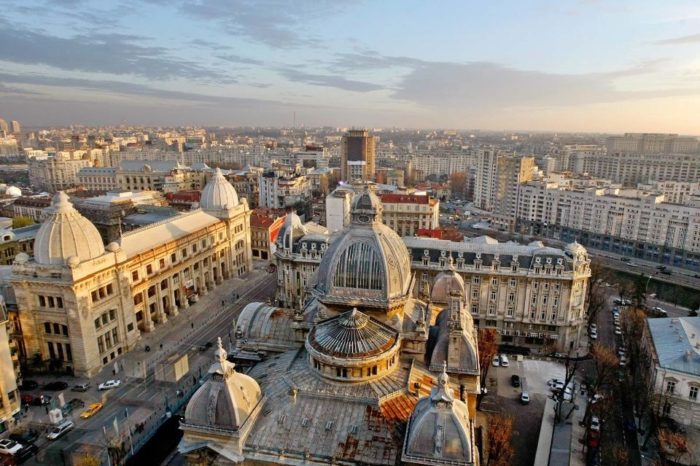Optional private pensions – a profitable alternative for long-term savings

An alternative solution that all economically active citizens – and especially young people – have at hand for long-term savings and for raising income at retirement age is the optional contribution to the private pension system. According to the A.S.F. on the evolution of private pensions in Q1 / 2021, the net assets of voluntary pension funds increased in March 2021 compared to the same month of the previous year by about 30 percent. Despite the fluctuations in the prices of financial assets caused by the COVID-19 pandemic, the total assets of voluntary pension funds registered in March higher values than in the previous year.
However, Romania has a large demographic space not yet covered by contributions to voluntary pensions, i.e. Pillar III, and this is an opportunity to develop the sector that can be achieved especially through financial education and awareness of young generations of the need to save long-term. During the last months, Romania has registered a stationary evolution of the structure of the participants in Pillar III depending on their age or according to their gender. The quoted report shows that, regarding the distribution by age groups, on March 31, 2021, the share of participants aged 16-29 was 6 percent of the total participants, the share of those aged 30 to 44 was of 40 percent and the share of those over 45 was 54 percent. The distribution of participants by gender remains constant, the share of female participants in the total number of participants being 51 percent, and the share of males being 49 percent.
The President of the Financial Supervisory Authority, Nicu Marcu states that “there is still a low degree of penetration of voluntary pensions, which ranges between 5 and 7 percent of the population for most age groups. And if we take into account the demographic evolution, which will put pressure on the public pension system, there is a natural need to encourage the population’s investments in the voluntary pension system. More and more young people need to start investing in their future, but also to save early for when they reach the age of three,” emphasizes Nicu Marcu, President of the A.S.F.
What do private pension funds invest in?
The private pension market has managed to meet the challenges posed by the COVID crisis by highlighting the ability of the private pension system to make a profit for participants even in adverse conditions. The resilience of the system in the crisis period is determined both by the quality of pension fund management, by the optimization of investment portfolios, and by the regulatory and supervisory activity. The A.S.F. The quote shows that all voluntary pension funds have invested the majority in government securities, in percentages of over 50 percent of total assets. Investments in voluntary pension funds in government securities accounted for 60 percent as of March 31, 2021. Investments in shares accounted for 27 percent of the total value of Pillar III pension fund assets. Another important category of financial assets in which voluntary pension funds have invested is bank deposits and investment funds.
Other financial instruments such as shares or corporate bonds are found in the investment portfolios of voluntary pension funds in significant percentages. Local investments of voluntary pension funds registered a percentage of approximately 88 percent, and of the investments in foreign currency, the largest share was in investments in euros (11 percent) at the end of March 2021.
Government securities denominated in lei represent a significant percentage (91 percent) in the total government securities held by private pension funds as of March 31, 2021, those denominated in euro being 9 percent and in US dollar 1 percent. In the case of issues in lei, the highest values were recorded by government securities with a maturity date of 2023 and 2024, and many of the issues in euro expire in 2025.
At the end of March 2021, investments in corporate bonds amounted to 77 million lei, with a share of 2.48 percent in the total assets of voluntary pension funds. Investments in other bonds issued by foreign non-governmental organizations reached a percentage of about 2 percent, investments in municipal bonds being 1 percent. Optional pension funds invested 30 percent in Romanian corporate bonds, 28 percent in corporate bonds issued by US issuers, and 15 percent in corporate bonds issued by Dutch issuers. The investments of voluntary pension funds in bank deposits and current accounts registered a level of 108 million lei at the end of the first quarter of 2021, the A.S.F. on the evolution of private pensions in Q1 / 2021.
Pension funds have continued to grow in almost every country in the world
An OECD report on the evolution of pension funds in 2020 indicates that last year they held more than $ 35 trillion globally, exceeding the 2019 level, despite the negative effects of the COVID-19 pandemic. This development was supported by the capital gains on the financial markets and the fiscal measures adopted in the year of the pandemic, according to a recent Report on trends and risks on the financial markets, prepared by the Financial Supervisory Authority. Pension funds have returned positively in most OECD jurisdictions, despite a sharp fall in stock prices in the first quarter of 2020, rising unemployment and declining GDP. Last year, pension funds in Hong Kong and Mexico recorded the highest performances of 12.4 percent and 9.3 percent, respectively. Pension funds also recorded real gains of over 5 percent in 17 other countries, including Denmark (7.5 percent), the Netherlands (6.5 percent) and the USA (5.9 percent). Pension fund managers invested mainly in shares and bonds at the end of 2020, with the two instruments accounting for, on average, about 74 percent of the total.















